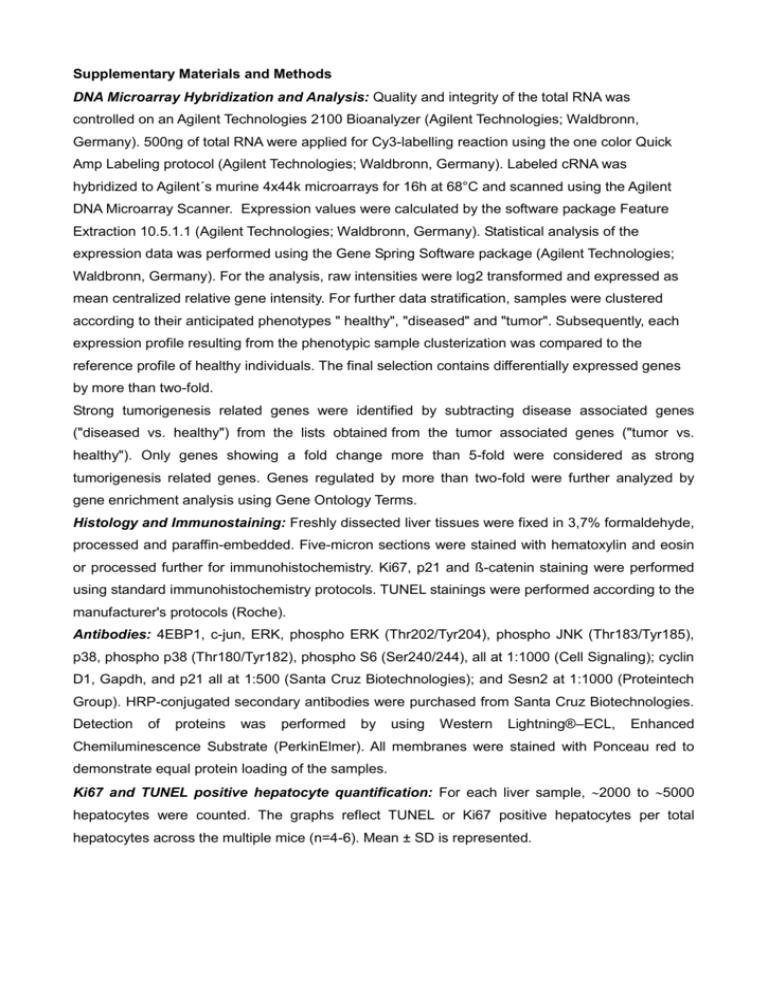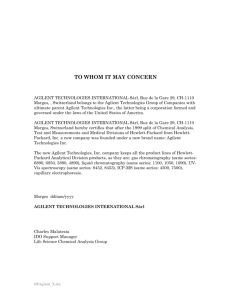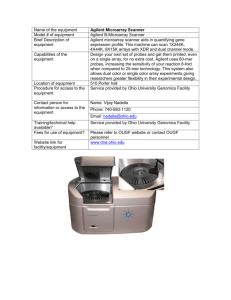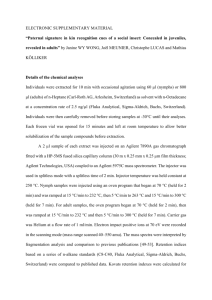hep26412-sup-0001
advertisement

Supplementary Materials and Methods DNA Microarray Hybridization and Analysis: Quality and integrity of the total RNA was controlled on an Agilent Technologies 2100 Bioanalyzer (Agilent Technologies; Waldbronn, Germany). 500ng of total RNA were applied for Cy3-labelling reaction using the one color Quick Amp Labeling protocol (Agilent Technologies; Waldbronn, Germany). Labeled cRNA was hybridized to Agilent´s murine 4x44k microarrays for 16h at 68°C and scanned using the Agilent DNA Microarray Scanner. Expression values were calculated by the software package Feature Extraction 10.5.1.1 (Agilent Technologies; Waldbronn, Germany). Statistical analysis of the expression data was performed using the Gene Spring Software package (Agilent Technologies; Waldbronn, Germany). For the analysis, raw intensities were log2 transformed and expressed as mean centralized relative gene intensity. For further data stratification, samples were clustered according to their anticipated phenotypes " healthy", "diseased" and "tumor". Subsequently, each expression profile resulting from the phenotypic sample clusterization was compared to the reference profile of healthy individuals. The final selection contains differentially expressed genes by more than two-fold. Strong tumorigenesis related genes were identified by subtracting disease associated genes ("diseased vs. healthy") from the lists obtained from the tumor associated genes ("tumor vs. healthy"). Only genes showing a fold change more than 5-fold were considered as strong tumorigenesis related genes. Genes regulated by more than two-fold were further analyzed by gene enrichment analysis using Gene Ontology Terms. Histology and Immunostaining: Freshly dissected liver tissues were fixed in 3,7% formaldehyde, processed and paraffin-embedded. Five-micron sections were stained with hematoxylin and eosin or processed further for immunohistochemistry. Ki67, p21 and ß-catenin staining were performed using standard immunohistochemistry protocols. TUNEL stainings were performed according to the manufacturer's protocols (Roche). Antibodies: 4EBP1, c-jun, ERK, phospho ERK (Thr202/Tyr204), phospho JNK (Thr183/Tyr185), p38, phospho p38 (Thr180/Tyr182), phospho S6 (Ser240/244), all at 1:1000 (Cell Signaling); cyclin D1, Gapdh, and p21 all at 1:500 (Santa Cruz Biotechnologies); and Sesn2 at 1:1000 (Proteintech Group). HRP-conjugated secondary antibodies were purchased from Santa Cruz Biotechnologies. Detection of proteins was performed by using Western Lightning®–ECL, Enhanced Chemiluminescence Substrate (PerkinElmer). All membranes were stained with Ponceau red to demonstrate equal protein loading of the samples. Ki67 and TUNEL positive hepatocyte quantification: For each liver sample, 2000 to 5000 hepatocytes were counted. The graphs reflect TUNEL or Ki67 positive hepatocytes per total hepatocytes across the multiple mice (n=4-6). Mean ± SD is represented.






